by KenBay | Jul 30, 2020

Aerospace Supplier Facility Management
As an industry leading Aerospace Supplier founded in 1979, we have built an excellent reputation within the aerospace sector by providing top notch quality and integrity for almost 40 years. Our philosophy is to provide a superior product by controlling growth and maintaining a sole focus on aerospace. Simply put, we are the “Standard of Excellence” within the aerospace metal finishing industry. Our commitment to the customer, qualified personnel and in-house quality guidelines have made us and will continue to make us a leader within its industry.
(more…)
by Kenbay Admin | Jun 6, 2019
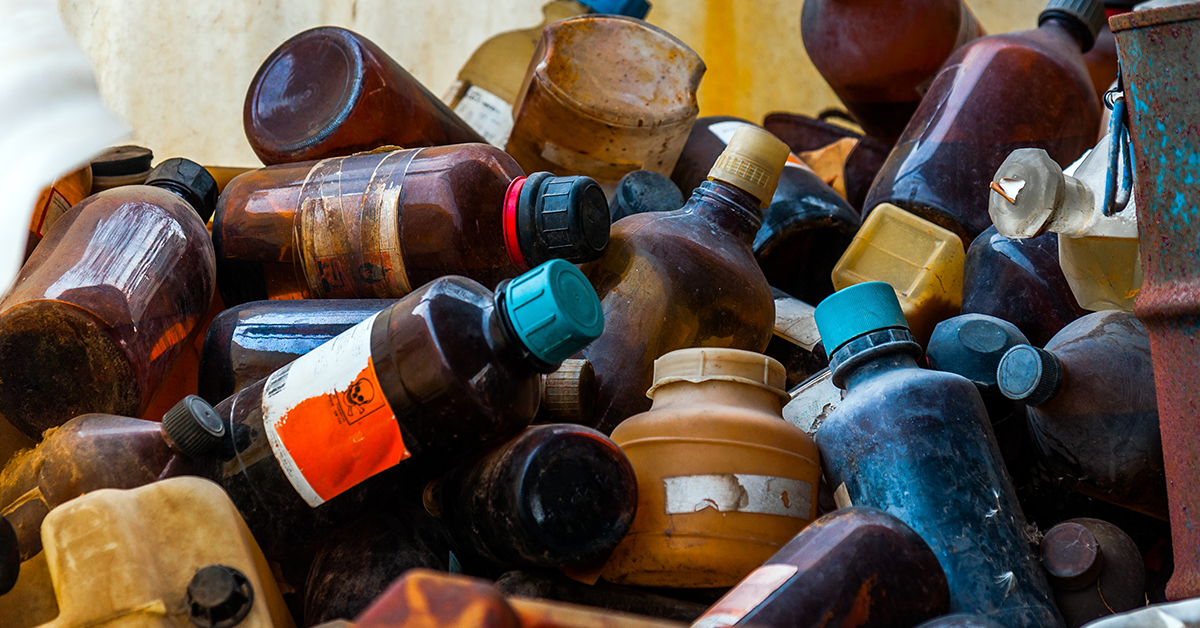
Dealing with hazardous waste disposal can often seem overwhelming.
Not only are there a multitude of hazardous waste disposal rules and regulations to adhere to, but there are also serious consequences associated with any mishap.
The first step in creating a plan to dispose of hazardous waste is to assess your procedures that produce waste and consider how you might diminish their byproducts.
Here are five tips to make sure you’re handling hazardous waste disposal safely and efficiently.
(more…)
by timm | Jan 29, 2018
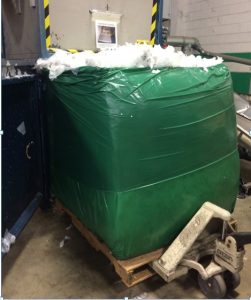 Do you have facility costs that you haven’t factored into your bottom line? Every production facility has waste. It’s unavoidable. But knowing how to adequately reduce its footprint, its hauling cost and potential for possible injuries can make all the difference in the world. If you have cardboard boxes coming into your production area filled with components or supplies and you are still breaking them down by hand, you have room for improvement. Cardboard is recyclable. It’s also messy if not properly dealt with at the point of taking out components. If you’re chasing after savings in your facility by parring down production costs, it might make sense to first examine how you are dealing with excess cardboard.
Do you have facility costs that you haven’t factored into your bottom line? Every production facility has waste. It’s unavoidable. But knowing how to adequately reduce its footprint, its hauling cost and potential for possible injuries can make all the difference in the world. If you have cardboard boxes coming into your production area filled with components or supplies and you are still breaking them down by hand, you have room for improvement. Cardboard is recyclable. It’s also messy if not properly dealt with at the point of taking out components. If you’re chasing after savings in your facility by parring down production costs, it might make sense to first examine how you are dealing with excess cardboard.
It’s Simple…Reduce Costs That Are Adding Up
Does dispersing components/supplies received add to the problem of disposing of the packaging materials in your plant? Some areas may be in foods or medicines processing areas where disposing of the packaging there is not permitted. Many locations that receive components/supplies may not have the space there, especially if it is expected to separate the trash from the packaging that can be recycled. In addition, unpacking on the production line may have an effect upon production.
What You Can Do to Reduce Facility Costs
An effective way to solve these problems may be to consider unpacking components where they are received. This can have a number of the following benefits:
- Save space in the production area
- Reduce the cost of collecting the packaging material
- Make it more cost effective in compacting for disposal of the packaging material
- Reduce traffic of persons and/or forklifts in the plant
KenBay has been providing companies with the ability to package the materials more cost effectively by reducing labor and achieving much higher compaction.
Turn to KenBay for a Better Compactor
There’s a lot of compactor options out there to reduce your facility costs. It may be tempting to think that bigger is better. But buying a large bulky compactor is no guarantee of power. Instead, why not try one of KenBay’s RotoPacs? The RotoPac is portable, so you can transport it easily across the floor to wherever you need. Put it right at the source of your waste for maximum effect. And you can bet that the RotoPac has a fantastic compaction rate! If you want to try out a RotoPac for yourself, visit our website to try one out for yourself. You’ll be impressed at it’s power . . . and your savings!
by CharlieB | Dec 21, 2016

The romantic side of me likes to imagine dust as a signifier of age and wisdom. I picture an old dusty library, books brimming with secrets waiting to be imparted. In reality, dust is a big problem for a lot of people. In your home, dust is unsightly. Far from your house appearing mysterious and interesting, you come across more that you don’t know how to take care of yourself. Think about it: have you ever been inside of a dusty room and found it pleasant? The problem is even worse for the manufacturing industry, where dust should not be tolerated whatsoever. KenBay knows that dealing with excess of any kind requires the right tools and the right mindset. You may think you need a dust collector in order to handle this problem — but think again!
Why Dust is a Problem
Dust may not be called “The Silent Killer” — that distinction goes to mold, high blood pressure, and carbon monoxide— but it can still do a lot of damage. On the one hand, there’s the basic issue of cleanliness. After all, nobody wants to work in a dirty environment, and you need to keep your employees happy. But there are deeper concerns at play here. The World Health Organization actually has listed airborne dust as a major workplace hazard because it can lead to disease, disability and even death. “But it’s just dust!” you may say. “I see it all the time! It can’t be that bad.” On the contrary: under the right circumstances, dust inhalation can lead to infertility or even cancer. How can this be?
Dust is composed of micro particles that come off the everyday materials around you. Anything small enough to be broken down into tiny bits and light enough to be tossed about in the air. If you live in a regular household environment, dust is little more than an annoyance. However, in the manufacturing industry, you are surrounded by toxic materials which then contaminate the dust and, subsequently, your lungs. At low exposure, you’re probably safe. The more dust you are exposed to, however, the greater risk you have of serious health complications. The Canadian Centre for Occupational Health and Safety has a comprehensive list of the effects dust has on the body, as well as diseases that dust exposure can lead to. When it comes to your employees, it’s better to be safe than sorry.
Skip the Dust Collector, Find a Better Answer
So what can you do to keep your work environment safe and your employees happy? One easy solution is to acquire a dust collector. We, however, are not quite satisfied with that idea. For one thing, a dust collector is only used after the dust has had time to settle in. For another, you (or one of your employees) will need to spend quite a bit of time cleaning with one to make sure everything is dust free. We believe there is a better way — a KenBay Rotopac! Our RotoPacs are hooded, so the dust never goes into the air in the first place. And they are small enough to be placed at the source of the waste, so everything is more efficient. You get a cleaner environment, no contamination, and safer conditions for your employees. If you are interested in trying out one of KenBay’s RotoPacs for yourself, then you can try it before you buy it through our website!
by CharlieB | Nov 21, 2016
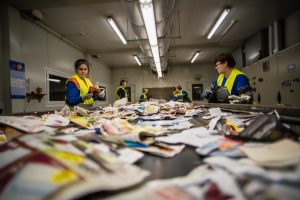 When you think of edge trim, you probably consider it to be harmless. That’s assuming, of course, that you give it any thought at all. In fact, some of you may be wondering: what do I even mean when I say edge trim? I mean the plastic remains of a product after it has been used. Edge trim can be a real problem for the manufacturing industry. It may look like it is easy to dispose of, worry free. But edge trim can actually be costing you money in ways that you don’t realize. KenBay believes in proper waste disposal, and too often manufacturing plants mishandle the disposal of edge trim. If you want to learn more, then read on.
When you think of edge trim, you probably consider it to be harmless. That’s assuming, of course, that you give it any thought at all. In fact, some of you may be wondering: what do I even mean when I say edge trim? I mean the plastic remains of a product after it has been used. Edge trim can be a real problem for the manufacturing industry. It may look like it is easy to dispose of, worry free. But edge trim can actually be costing you money in ways that you don’t realize. KenBay believes in proper waste disposal, and too often manufacturing plants mishandle the disposal of edge trim. If you want to learn more, then read on.
Edge trim can Halt Production.
At its worst, a jam from edge trim can stop your entire production line dead. The plastic gets stuck in the machines and nothing else can get through. Manufacturing plants are like an elaborate cogwork mechanism: they require every part to be functional in order to operate. When one part stops, the whole thing has to shut down and wait for it to be up and running again. This means wasted time!
It Requires Human Labor to Address the Jam.
Once the jam has begun, it takes money and manpower to fix. You may need to have someone from the machine’s original manufacturer come out and take a look. Do you trust an inexperienced worker to look at your machinery? Do they know how to take the machine apart and put it back together exactly as it was? Paying for someone to come and fix your problem (which is already costing you money by halting your production) can add additional expenses. Yes you get the production line back up and running, but how much money have you lost from paying for the expert on top of the lack of production?
A More Subtle Form of Financial Loss.
The people in charge of manufacturing plants know how devastating a full jam can be. As a result, companies don’t run their machines at full capacity for fear of jams. The machines run slower, which means less product is produced, which means less product to sell and fewer finances. Who knew something as seemingly inconsequential as Edge Trim could have such a widespread impact!
KenBay believes that edge trim shouldn’t have a stranglehold over your production. In our opinion, it’s better to dispose of the edge trim right at the source of the waste. We have actually spoken about this before! Our solution: place a RotoPac at the source of edge trim and remove it from the equation entirely. By eliminating the edge trim, you can run your machines at full speed. You eliminate the risk of halts in production. Finally, you reduce headcount because you don’t need to pay someone to unjam your assembly line! A simple solution ends up saving you a lot of time and money, and those savings definitely add up over time. If you are interested in trying one of KenBay’s portable RotoPacs for your plant, visit KenBay’s website where you can try it before you buy it.
by LaurenL | Oct 21, 2016
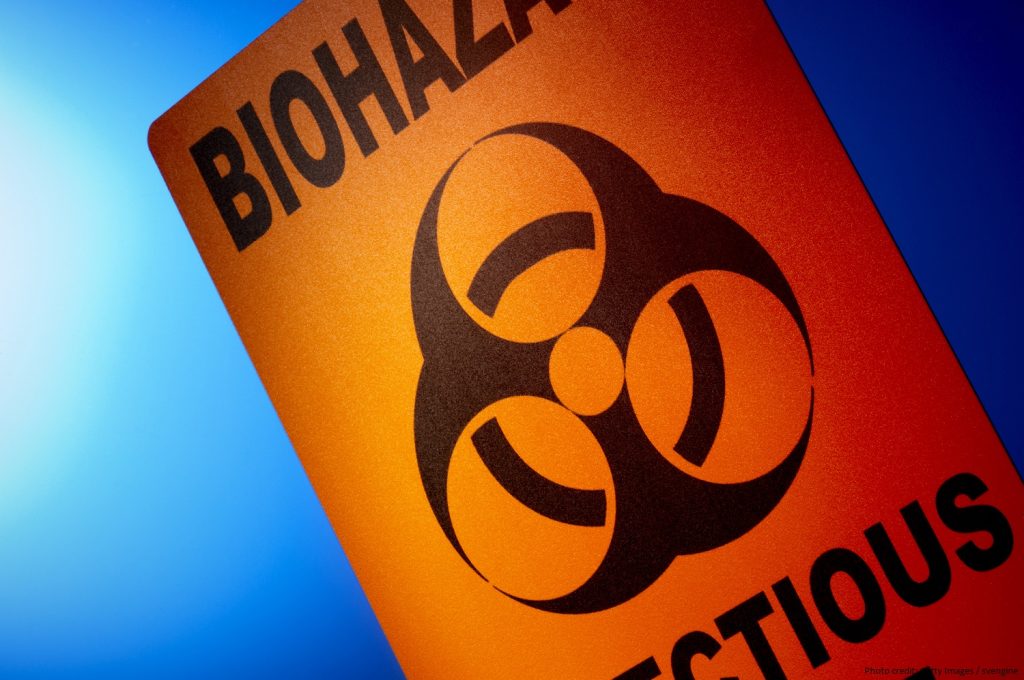 We know that businesses face a unique set of waste management challenges when they handle hazardous substances. Where others can send their waste to a landfill or Waste to Energy plant without a second thought, these businesses must consider additional steps. Because the responsible disposal of hazardous substances is different than the disposal of other waste products, businesses should have a separate waste management plan for hazardous materials. While daunting, it’s important to consider these processes and look for ways to improve upon them.
We know that businesses face a unique set of waste management challenges when they handle hazardous substances. Where others can send their waste to a landfill or Waste to Energy plant without a second thought, these businesses must consider additional steps. Because the responsible disposal of hazardous substances is different than the disposal of other waste products, businesses should have a separate waste management plan for hazardous materials. While daunting, it’s important to consider these processes and look for ways to improve upon them.
What are Hazardous Substances?
One challenge that manufactures sometimes face is knowing exactly what is considered a hazardous substance. To effectively manage hazardous waste, it is important to know the EPA and OSHA hazardous substance definition. It’s also important to know the state and federal requirements and laws that dictate how hazardous waste must be managed. Some of the most common types of hazardous substances often include:
- Ignitable items that easily catch on fire like solvents, paint, and gasoline
- Corrosive waste that “eats” something else, including battery acid, caustic paint strippers, and some floor cleaners
- Reactive waste that is unstable or explosive like certain cyanide and sulfide-bearing waste
- Toxic substances that are harmful when ingested or absorbed like gasoline and solvents
These are just a few hazardous substances examples. When you look for ways to improve your processes for handling hazardous waste, do thorough research. Look for a hazardous substances list that is specific to your industry, and be sure you understand the legal requirements for disposing of it.
Evaluate Your Process Repeatedly
One of the best ways you can improve your processes for handling hazardous substances is by simply monitoring your processes more often. First, you’ll need to create a plan for handling hazardous waste, using industry, state, and federal guidelines. Then, you need to evaluate that plan repeatedly. To ensure that your system is up-to-date, efficient, and safe, you need to reevaluate your procedures from time to time. At least once every quarter, set aside time to take a look at the waste products in your business. Then, find ways to improve your process.
Handle Hazardous Substances Less Often
It goes without saying that the safest way to handle hazardous substances is to not handle it all. Take a significant step to improving your processes for safely handling hazardous substances by finding ways to handle dangerous waste less often. To do this, consider a small footprint compactor that can be placed at the source of hazardous waste.
Hazardous waste compactors like our HazPac allow you to handle dangerous substances less often. In addition, the HazPac has a small footprint, high compaction rate, ease of use, and a unique ability to compact waste into bulk bags or into hazardous waste boxes. This makes our hazardous waste compactor ideal for compacting hazardous waste for transporting. In addition, because of the HazPac’s small footprint, it can be placed close to the source hazardous material generation, saving travel time and increasing safety and efficiency.
Learn More about KenBay’s Waste Management Products
We know that waste management can be a burden. But, with KenBay, you’ll have the tools you need to help make the job a little easier. The next time you evaluate your waste products and waste management strategy, consider integrating one of our industrial trash compactors into your processes.
Don’t let something like a waste get in the way of your business operations. If you’re interested in trash compactors or finding a committed consultant to help you reduce your waste, call KenBay. We can tell you more about our services, no matter what industry you’re in, or how much waste you are creating!
Photo credit: Getty Images / svengine
by LaurenL | Sep 9, 2016
 There’s one question that every business asks when it considers becoming a zero waste organization: how will this affect our bottom line? For many skeptics, the assumption is that “going green” costs money. We are here to tell you that these assumptions are wrong. Zero waste companies, ones that implement measures to keep their waste out of landfills, often find that saving money and being environmentally friendly can go hand in hand. To help you understand how you can implement zero waste programs into your business and save money, here are a few of our best tips:
There’s one question that every business asks when it considers becoming a zero waste organization: how will this affect our bottom line? For many skeptics, the assumption is that “going green” costs money. We are here to tell you that these assumptions are wrong. Zero waste companies, ones that implement measures to keep their waste out of landfills, often find that saving money and being environmentally friendly can go hand in hand. To help you understand how you can implement zero waste programs into your business and save money, here are a few of our best tips:
Ensure Your Equipment is Reliable and Safe
It goes without saying that unsafe working conditions lead to a number of problems. But, it’s often worth repeating. When you begin a zero waste initiative, you will likely look for new tools and equipment to help you in your pursuit. Whether you implement new equipment or continue to use your existing tools, ensure that your equipment is reliable and safe. Addressing safety concerns and expensive maintenance and repairs will cost you money and will hurt your bottom line. To avoid this problem, be sure that the machinery and equipment your zero waste business uses is the most reliable on the market. The less time, energy, and resources spent on repairs and updates, the more cost efficient you will be in your pursuit of zero waste.
Evaluate the Efficiency of Your Tools
If we’ve said it once, we’ll say it again, ineffective tools will cost you money. How does this tip differ from what we’ve already mentioned? Glad you asked. Evaluating the efficiency of your tools is much more than just being aware of their reliability and safety. Even if the machinery you use, or may implement in zero waste initiatives, is reliable, safe, and low maintenance, ask yourself this: Is it also efficient? If you were building your processes today, would you choose this the machinery? Does your equipment get the job done quickly? Are there other options on the market that do the job better and faster? Plain and simple, wasting time wastes money. When you pursue zero waste initiatives, seek out the time and money saving options available to you. Stay vigilant and do your research to make sure that the tools you use are the most efficient ones on the market.
Consider Labor Costs
When you reduce the time it takes to get a job done, you also reduce your labor costs associated with the task. For many businesses, this reduction in transportation and labor costs is the easiest way to save money in the pursuit of zero waste. From the first step of your operation to the last, evaluate your procedures and always be on the lookout for ways to minimize your labor costs. Can a task be performed faster? Is there a tool on the market that will make labor easier to complete in a timely fashion? Being mindful of these questions will help your business save money that might be spent unnecessarily on labor costs. This is another strategy for saving money that you can implement in your business when you pursue a zero waste initiative.
Let Us Help You Save Money in Your Pursuit of Zero Waste
With KenBay, you can minimize costs and save money at the beginning of waste management. KeyBay’s commercial trash compactor models offer a safe, reliable, easy to use option for compacting waste before transport, thus saving you money in your pursuit of zero waste. Our RotoPack trash compactors address all the money saving tips we’ve suggested for you.
1. Reliability and Safety
The RotoPac trash compactor by KenBay is easy to use, made of quality construction, and implements several key safety measures. Because of this, you will save money on the safety and maintenance costs associated with trash compacting.
2. Efficiency
The RotoPac is small enough to place directly at the source of your waste. Instead of transporting waste elsewhere, you can compact it right away, saving you time, energy, and ultimately money. In addition, the RotoPac allows for more efficient, continuous trash compacting. Never again will production halt because of waiting time at the trash compactor.
3. Reduced Labor Costs
Although the RotoPac is smaller than traditional trash compactors, it compacts trash at such a rate that you don’t need to empty the compactor as often. In addition, trash is compacted more tightly in a RotoPac than in a traditional compactor. This tight compaction means you can fit more waste into a single bag and make fewer trips to dispose of waste. A trash compactor like the RotoPac that allows you to spend less time collection and transporting waste will reduce your labor costs and raise your cost efficiency.
KenBay produces innovative equipment that maximizes safety and sustainability and minimizes the financial and global impact of solid industrial waste removal. Heavy hitters like the U.S. Navy, Purolator, and Boeing use our cost and work efficient tools daily. We’ve helped these organizations improve their efficiency and save money. Now, we can help your business do the same. Contact us today!
by charlotte | Apr 13, 2016
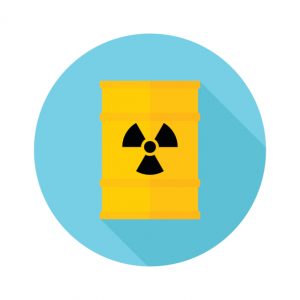 The hazardous waste disposal industry ships in excess of 3 billion tons of regulated materials throughout the United States each year. Hazardous waste disposal can seem a looming task in your operations, but with the right information and resources, it can be an easy, safe and worry-free process. There is no reason to be overwhelmed at the rules and regulations around hazardous waste disposal, or to put yourself and your employees in unsafe situations by neglecting to handle it with care. If you’re looking for new and better ways to take care of your hazardous waste disposal you’ve come to the right place as we are waste management experts and have all the information you need to make your workplace as safe and clean as possible.
The hazardous waste disposal industry ships in excess of 3 billion tons of regulated materials throughout the United States each year. Hazardous waste disposal can seem a looming task in your operations, but with the right information and resources, it can be an easy, safe and worry-free process. There is no reason to be overwhelmed at the rules and regulations around hazardous waste disposal, or to put yourself and your employees in unsafe situations by neglecting to handle it with care. If you’re looking for new and better ways to take care of your hazardous waste disposal you’ve come to the right place as we are waste management experts and have all the information you need to make your workplace as safe and clean as possible.
Hazardous Waste Disposal Packing Categories
The first thing you need to figure out is what packing categories your hazardous waste falls into. There are nine different classes that indicate the degree of danger of your hazardous waste. Because your hazardous waste will need to be removed from you worksite, the Department of Transportation has established guidelines for how your hazardous waste must be packaged for the safest transportation possible.
- Class 1 Explosives and pyrotechnics
- Class 2 Compressed, flammable, nonflammable, and poison gases
- Class 3 Flammable liquids
- Class 4 Flammable solids
- Class 5 Oxidizers and organic peroxides
- Class 6 Toxic and infectious materials
- Class 7 Radioactive materials
- Class 8 Corrosive materials
- Class 9 Miscellaneous dangerous substances and articles
The manner in which you store and package your hazardous waste is extremely important in order to be properly insured and as safe as possible. Find out which classes apply to your hazardous waste disposal and how you need to package all of the waste materials you are creating.
Hazardous Waste Compactors
If your hazardous waste falls into any of the solid waste classes, then a hazardous waste compactor could improve both your workflow and safety in your workplace. The HazPac for Hazardous Waste from KenBay is an excellent product capable of reducing the size of your hazardous waste while keeping it confined. Depending on the packing class of your waste, the HazPac can be customized to either package it into plastic bags or tri-wall waste boxes.
The Benefits of the HazPac
The Hazpac not only keeps your waste confined to a specific area, it also has an incredibly small footprint. This means that you can place it right at the site where your hazardous waste is created, cutting down not only on the time hazardous waste disposal takes, but also the distance it has to travel. The risks of contamination will decrease significantly. The HazPac can also contain six times as much hazardous waste as a conventional waste can, which will greatly decrease the packaging and removal costs.
Don’t take hazardous waste disposal lightly. It is a serious matter that requires a legal and thoughtful plan. There are many resources to help you make sure your hazardous waste disposal is as efficient and safe as possible, including waste management experts like KenBay. Give us a call to see how we can help you with your hazardous waste disposal plan.
by charlotte | Apr 7, 2016
 As an employer, it’s your responsibility to make sure your manufacturing facility is safe. Your employees have the right to a safe workplace free of hazards and health risks. That said, running an organization doesn’t leave a whole lot of time for you to be supervising the workplace to ensure that health and safety codes are always up to date and being followed diligently. Don’t let this keep you from implementing the necessary manufacturing safety protocols, and making sure there are trustworthy people in place to see that they are adhered to. Manufacturing safety ought to be at the top of your business strategy list to ensure that you are decreasing the liability and risk of your operation.
As an employer, it’s your responsibility to make sure your manufacturing facility is safe. Your employees have the right to a safe workplace free of hazards and health risks. That said, running an organization doesn’t leave a whole lot of time for you to be supervising the workplace to ensure that health and safety codes are always up to date and being followed diligently. Don’t let this keep you from implementing the necessary manufacturing safety protocols, and making sure there are trustworthy people in place to see that they are adhered to. Manufacturing safety ought to be at the top of your business strategy list to ensure that you are decreasing the liability and risk of your operation.
10 Ways to Improve Manufacturing Safety
- Trustworthy Supervisors
Make sure that every shift has respected supervisors who have rapport with all the workers. These leaders should be revered by everyone they work with, able to motivate and correct them in productive ways, and to uphold all manufacturing safety protocols, no matter how inconvenient they might be.
- Education
Provide frequent continuing education classes for these supervisors to keep them up to date on new health and safety standards, as well as new methods of updating and optimizing manufacturing safety practices.
- Unite the Team
Hold manufacturing safety meetings whenever a risk is brought to your attention to inform employees of the seriousness of hazards in the workplace. Unite the team around the common goal of doing work with excellence, which means it is as safe as possible.
- Zero Tolerance
Do not, under any circumstances, tolerate someone who is willfully ignoring manufacturing safety regulations. These individuals put more than just themselves at risk, but also your organization and its employees.
- Frequent Monitoring
While you are certainly busy running the operation, don’t withdraw your presence from the manufacturing site. The more your employees see and interact with you, the more they know you actually care about their health and safety, and not just covering your own back.
- Checklist
If you have protocols that can be tracked on a list by day and time, initialed by the person who completes them, this can be a great way to set up accountability among the team. This way you can both commend and reprimand employees for their performance and commitment to have a risk-free work environment.
- Signage
Good signs throughout your facility is a great way to remind employees of the manufacturing safety rules in place.
- Waste Management
Waste can be central to the safety and health hazards in manufacturing facility, and ought to be properly managed. Be sure that your waste cans are optimally placed throughout your workspace to both reduce waste and to ensure that they are emptied and cleaned frequently.
- Build a Team
If your supervisors are too busy managing the other aspects of manufacturing safety, have them designate teams of people in charge of making sure that waste is disposed of properly.
- Buy a Trash Compactors
Stainless steel trash compactors are an affordable way to improve the manufacturing safety of your workplace, not only reducing potential fire hazards and obstructions, but also reducing the cost of removal.
Call KenBay if you are ready to learn more about how waste management practices can increase manufacturing safety.
by charlotte | Mar 31, 2016
 Is your workplace feeling hectic and sometimes even unsafe with things like trash piling up unnecessarily because of inefficient workflows? It happens, but don’t let the problems drag on without making the necessary changes to not only increase everyone’s efficiency but also ensure that you are fostering a safe and desirable work setting. One of the most cost-effective ways to improve safety and efficiency while decreasing your waste is to invest in a small footprint stainless steel trash compactor. A small footprint trash compactor is the surest way to improve the environment of your facility whether you’re in manufacturing, the food and ingredient industry, or dealing with hazardous waste or explosives. There’s no better way to ensure your workplace has airtight safety and operations than optimizing your space with a small footprint compactor.
Is your workplace feeling hectic and sometimes even unsafe with things like trash piling up unnecessarily because of inefficient workflows? It happens, but don’t let the problems drag on without making the necessary changes to not only increase everyone’s efficiency but also ensure that you are fostering a safe and desirable work setting. One of the most cost-effective ways to improve safety and efficiency while decreasing your waste is to invest in a small footprint stainless steel trash compactor. A small footprint trash compactor is the surest way to improve the environment of your facility whether you’re in manufacturing, the food and ingredient industry, or dealing with hazardous waste or explosives. There’s no better way to ensure your workplace has airtight safety and operations than optimizing your space with a small footprint compactor.
Small Footprint?
The small footprint RotoPac by KenBay only needs a space of 4 by 5 feet to fit comfortably in your work space. While it takes up very little room, it actually increases your space for waste as it compacts everything from food waste to general manufacturing waste. When you optimize your waste management with a small footprint compactor, you will also significantly reduce your waste removal costs, as your trash is reduced at a ratio of six to one, compacting up to 300 pounds per hour.
High Efficiency
Not only does a small footprint compactor reduce the volume of your waste, but it can also significantly increases your workflow efficiency. When you invest in a compactor, take the time to consider where the disposal points in your workflow are, and how they are impacting the efficiency of everyone producing and disposing of waste. Are your waste cans in places that are inconvenient or unsafe for employees? Is an otherwise easily overlooked thing like waste really inhibiting your productivity? Most people don’t even realize it until they start considering new waste management methods to reduce costs, but find that they are also increasing productivity and safety as well.
Nothing Safer
Waste cans can often be misused, leading to fire hazards or the potential for someone to get hurt by things getting in the way. Investing in a small footprint compactor is an easy and quick fix for any safety problems being caused by your current waste management practices. You will also decrease the number of times waste needs to be removed while motivating your employees to pay more attention to their waste practices by showing them you’re committed to making their space safe and clean.
Don’t let your waste problems go without a solution. Not only are you wasting money, but you could be putting your business at legal or physical risk by neglecting waste management issues. Among many solutions is investing in a small footprint trash compactor for your workplace. If you’re interested in other waste management ideas contact KenBay for more information on how to improve your trash practices. Safety and cost are no small factors in operating a respectable and successful business. Take action before it’s too late!




 Do you have facility costs that you haven’t factored into your bottom line? Every production facility has waste. It’s unavoidable. But knowing how to adequately reduce its footprint, its hauling cost and potential for possible injuries can make all the difference in the world. If you have cardboard boxes coming into your production area filled with components or supplies and you are still breaking them down by hand, you have room for improvement. Cardboard is recyclable. It’s also messy if not properly dealt with at the point of taking out components. If you’re chasing after savings in your facility by parring down production costs, it might make sense to first examine how you are dealing with excess cardboard.
Do you have facility costs that you haven’t factored into your bottom line? Every production facility has waste. It’s unavoidable. But knowing how to adequately reduce its footprint, its hauling cost and potential for possible injuries can make all the difference in the world. If you have cardboard boxes coming into your production area filled with components or supplies and you are still breaking them down by hand, you have room for improvement. Cardboard is recyclable. It’s also messy if not properly dealt with at the point of taking out components. If you’re chasing after savings in your facility by parring down production costs, it might make sense to first examine how you are dealing with excess cardboard.
 When you think of edge trim, you probably consider it to be harmless. That’s assuming, of course, that you give it any thought at all. In fact, some of you may be wondering: what do I even mean when I say edge trim? I mean the plastic remains of a product after it has been used. Edge trim can be a real problem for the manufacturing industry. It may look like it is
When you think of edge trim, you probably consider it to be harmless. That’s assuming, of course, that you give it any thought at all. In fact, some of you may be wondering: what do I even mean when I say edge trim? I mean the plastic remains of a product after it has been used. Edge trim can be a real problem for the manufacturing industry. It may look like it is  We know that businesses face a unique set of waste management challenges when they handle hazardous substances. Where others can send their waste to a landfill or Waste to Energy plant without a second thought, these businesses must consider additional steps. Because the responsible disposal of hazardous substances is different than the disposal of other waste products, businesses should have a separate waste management plan for hazardous materials. While daunting, it’s important to consider these processes and look for ways to improve upon them.
We know that businesses face a unique set of waste management challenges when they handle hazardous substances. Where others can send their waste to a landfill or Waste to Energy plant without a second thought, these businesses must consider additional steps. Because the responsible disposal of hazardous substances is different than the disposal of other waste products, businesses should have a separate waste management plan for hazardous materials. While daunting, it’s important to consider these processes and look for ways to improve upon them.  There’s one question that every business asks when it considers becoming a zero waste organization: how will this affect our bottom line? For many skeptics, the assumption is that “going green” costs money.
There’s one question that every business asks when it considers becoming a zero waste organization: how will this affect our bottom line? For many skeptics, the assumption is that “going green” costs money.  The
The  As an employer, it’s your responsibility to make sure your manufacturing facility is safe. Your employees have the right to a safe workplace free of hazards and health risks. That said, running an organization doesn’t leave a whole lot of time for you to be supervising the workplace to ensure that health and safety codes are always up to date and being followed diligently. Don’t let this keep you from implementing the necessary manufacturing safety protocols, and making sure there are trustworthy people in place to see that they are adhered to.
As an employer, it’s your responsibility to make sure your manufacturing facility is safe. Your employees have the right to a safe workplace free of hazards and health risks. That said, running an organization doesn’t leave a whole lot of time for you to be supervising the workplace to ensure that health and safety codes are always up to date and being followed diligently. Don’t let this keep you from implementing the necessary manufacturing safety protocols, and making sure there are trustworthy people in place to see that they are adhered to.  Is your workplace feeling hectic and sometimes even unsafe with things like trash piling up unnecessarily because of inefficient workflows? It happens, but don’t let the problems drag on without making the necessary changes to not only increase everyone’s efficiency but also ensure that you are fostering a safe and desirable work setting. One of the most cost-effective ways to improve safety and efficiency while
Is your workplace feeling hectic and sometimes even unsafe with things like trash piling up unnecessarily because of inefficient workflows? It happens, but don’t let the problems drag on without making the necessary changes to not only increase everyone’s efficiency but also ensure that you are fostering a safe and desirable work setting. One of the most cost-effective ways to improve safety and efficiency while 